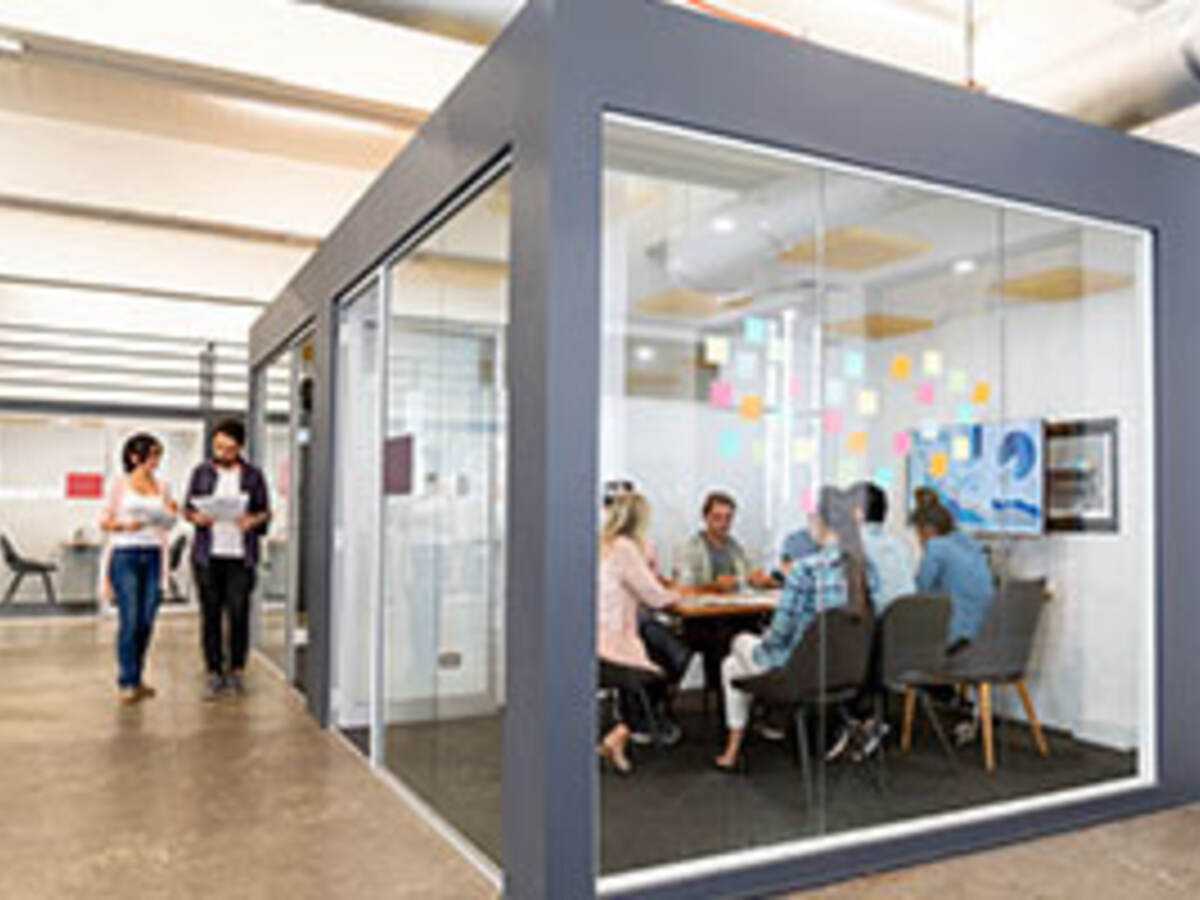October 28, 2019
Office pods, which are free-standing spaces for private meetings within an office building, are growing in popularity due to the ability to create inexpensive private space within open office plans. Recently, WeWork announced that it is removing 2,300 office pods from its rental offices in the United States and Canada due to health concerns related to elevated levels of formaldehyde and potentially other volatile organic compounds (VOCs). This decision came after the company received occupant complaints of eye irritation.
WeWork’s experience made headlines due to its plans to go public, but it is certainly not the only case of indoor finishes and furnishings triggering health risks and complaints among office workers. Brought to market in response to demand for privacy solutions in the open floor plans in commercial spaces, office pods are small, often portable enclosed spaces that offer the benefits of quiet, enclosure and privacy.
Some reports estimate that up to 90 percent of commercial buildings use open floor spaces.* According to a Queensland University of Technology Study, employees working in offices with an open floor plan experience greater stress, conflict and blood pressure. Yet while open floor plans may be making employees sick with frustration and cold and flu germs, there are also health risks lurking in office pods and other furnishings.
Designed and brought to market with great speed, office pods present some unique risks during usage. Fire hazards, high levels of VOC emissions that could prove harmful to human health, and structural issues like stability are just a few of the safety issues associated with office pods. Incidents can be extremely costly in the U.S., where litigation is common and brand damage can harm companies.
But there’s good news: rather than risking problems in market, manufacturers can proactively demonstrate the safety and suitability of their products prior to releasing them to market. Some testing plans to consider are:
- Test office pods for VOC and particle emissions. This testing can reveal potential problems like elevated levels of potentially harmful VOCs coming from products so that manufacturers can address issues early rather than dealing with customer complaints, recalls or lawsuits.
- Achieve GREENGUARD Certification for office pods, which demonstrates that they emit low levels of chemicals that are known to cause health issues.
- Certify products to UL 962, the Standard for Household and Commercial Furnishings. Under this standard, products are evaluated for a variety of safety attributes including electrical and mechanical safety.
As the speed of product development continues to accelerate, manufacturers are wise to make product emissions and safety testing an integral part of their innovation process. Explore our services to see how UL can help.

